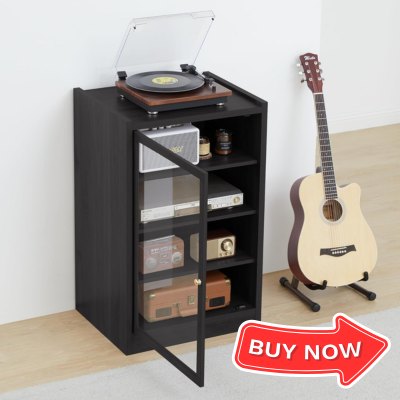Optimize Your Setup: Smart Home Theater Receiver Placement Tips
When setting up a home theater, most people focus on speaker placement, screen size, and seating—but your AV receiver’s position matters just as much. Often overlooked, the placement of your home theater receiver can directly impact system performance, ease of use, and even the longevity of your gear.
From overheating issues to messy cable management or blocked remote signals, poor home theater receiver placement can create more problems than you’d expect. So, getting it right first time can make your entire setup cleaner, cooler, and more efficient.
In this guide, we’ll cover practical tips to help you position your receiver for optimal airflow, accessibility, and connectivity. No technical background required—just a bit of planning and a few simple adjustments can go a long way in boosting your overall home theater experience.

Smart Placement Tips for AV Receivers
Choosing the Right Cabinet or Stand for Your AV Receiver
Many home theater setups include placing the AV receiver inside a TV stand or media cabinet. If you already have one, great—but not all furniture is created equal when it comes to housing electronics.
Units designed specifically for AV gear offer added airflow, better access, and built-in cable management, such as open back panels, something standard cabinets often lack.
>> From Entry Level to Premium Sony AV Receivers Reviewed <<
How Much Space Should You Leave for Your Receiver?
It’s not enough to simply squeeze your AV receiver into a shelf that matches its dimensions. AV receivers need extra breathing room for both cooling and cable connections, especially bulkier kits like the Sony STR-AZ7000ES.
Tight spaces can restrict airflow, leading to overheating or even shutdowns. Always give them space to breathe and leave at least 3 inches of space above the unit to allow heat to escape safely.
Proper Ventilation for Long-Term Performance
Receivers generate heat during operation, especially when powering multiple speakers. Most have vented panels on top to help with cooling. Without adequate space above and around the unit, heat can build up quickly—impacting performance and potentially shortening the lifespan of your gear.
Noise and Vibration Considerations for Home Theater Receivers
While AV receivers don’t usually make a lot of noise, some units with built-in cooling fans or high-output amplifiers can produce noticeable hum or vibration, especially in enclosed spaces. And, placing a receiver near powerful subwoofers can introduce physical vibrations that impact performance or longevity.
To minimize these effects, consider isolating your receiver from the surface it sits on using soft pads or anti-vibration feet. These inexpensive accessories help absorb minor vibrations and reduce the transfer of noise through the furniture.
Leave Room for Rear Connections

Keep in mind that you’ll need access to the back of your receiver for HDMI, speaker wire, and other connections. Allow a few inches of clearance behind the unit so you’re not forced to crimp or bend cables when making changes to your system.
Cable Management Tips for a Cleaner Setup
Home theater wiring can get out of control fast. Tangled cords not only look messy—they also make troubleshooting or swapping components a hassle. Look for cabinets that include features like rear access panels, built-in cable channels, and internal gaps that allow cables to pass cleanly between shelves.
Labeling your cables and bundling them neatly with ties or sleeves can go a long way toward maintaining an organized system, and will give you less stress when you have to access them in the future.
Should You Hide Your AV Receiver?
If your TV is wall-mounted—especially above a fireplace—or you prefer a minimalist look, you might want to move your receiver out of sight. Don’t keep it in a tight cupboard as it needs air, but a hidden component rack in a nearby closet or utility room is a practical solution, especially for larger home theater systems with multiple devices.
>> Home Theater Receivers for High-End Audio Performance <<
Power Supply and Surge Protection for Home Theater Receivers
Protecting your AV receiver from power surges is essential. Unexpected voltage spikes can damage sensitive internal circuitry and shorten the lifespan of your gear.
Use a high-quality surge protector or, for even more robust defense, a power conditioner. These devices blocak power surges and also filter out electrical noise for cleaner power delivery to your audio equipment.

When setting up your power connections, be sure to route power cables separately from signal cables like HDMI or speaker wires. This helps reduce the chance of electromagnetic interference (EMI), which can degrade sound or video quality over time.
Stacking and Weight Distribution: Best Practices
It’s common to see AV receivers stacked with other components in a media cabinet, but doing so can lead to issues if not done properly. Receivers need room to breathe, and stacking gear can restrict airflow—especially if other devices generate heat as well.
Avoid placing heavy components like amplifiers or game consoles directly on top of your receiver. This can put unnecessary strain on the chassis and internal parts, possibly leading to long-term damage or performance issues.
Control Your AV Receiver with a Smartphone or Tablet
The main drawback of hiding your receiver is line-of-sight. Traditional remotes require a direct path to work properly. But don’t worry, as you may not need a traditional remote at all.
Most modern receivers offer a companion control app that can be downloaded to your smartphone or tablet, making it easy to manage your system wirelessly.
These apps typically work with both iOS and Android devices and allow you to control essential functions like volume, input selection, listening modes, and more. Some apps even offer access to streaming services or internet radio, turning your phone into a fully functional remote control.
Using a mobile app is especially useful if your receiver is hidden in a cabinet or located in another room, as it doesn’t rely on a direct line-of-sight like standard infrared remotes. With just a few taps on your screen, you can control your entire home theater setup from anywhere within your network range.
>> Sony STR-AZ7000ES AV Receiver Reviewed <<
Give Your Home Theater Receiver Enough Room
Proper Home Theater Receiver placement is about creating a setup that runs cooler, sounds better, and lasts longer. From ensuring adequate ventilation to managing cables and protecting your gear from power surges, small adjustments can make a big difference in performance and reliability.
Whether you’re working with a sleek media console, a hidden equipment rack, or a full AV cabinet, keeping these placement tips in mind will help you get the most out of your system. Think ahead, stay organized, and don’t overlook the little details, because in home theater setups, the small stuff often matters most.
Check out more from our Soundrating Blog
Home Theater Receivers Explained: A Simple, In-Depth Guide
Big Screen Dreams in Small Rooms: Designing a Cozy Home Theater

I am a passionate and skilled car audio enthusiast with 15 years of experience in the industry. My journey started when I replaced my first set of factory car speakers, sparking a deep love for high-quality sound. Since then, I have worked as a representative for renowned brands like Kenwood and Alpine.
With a background in both retail and distribution, I have developed a comprehensive understanding of the car audio market. Currently a certified (MECP) installer in the Mobile Electronics industry, my expertise lies in delivering top-notch audio installations. My knowledge, coupled with my genuine passion, makes me the go-to professional for all car audio needs.
